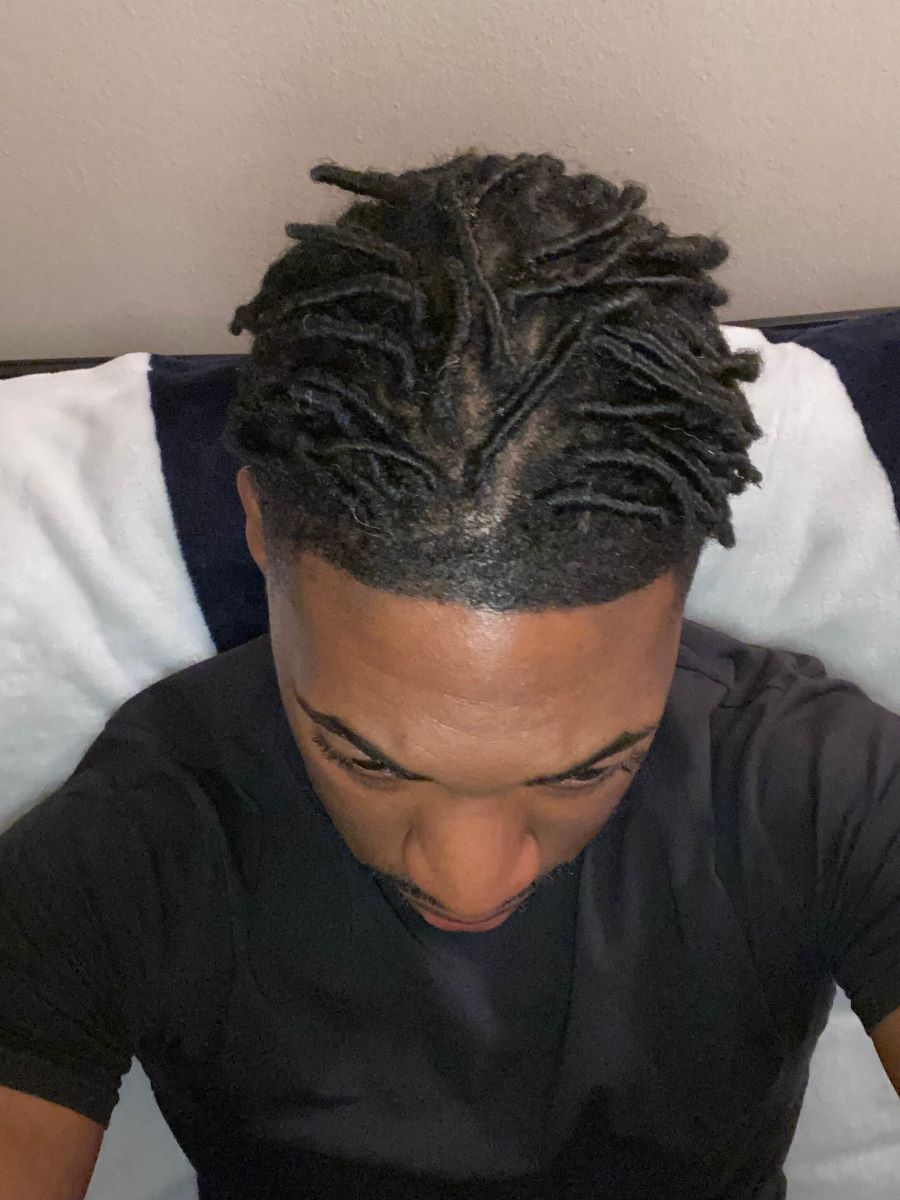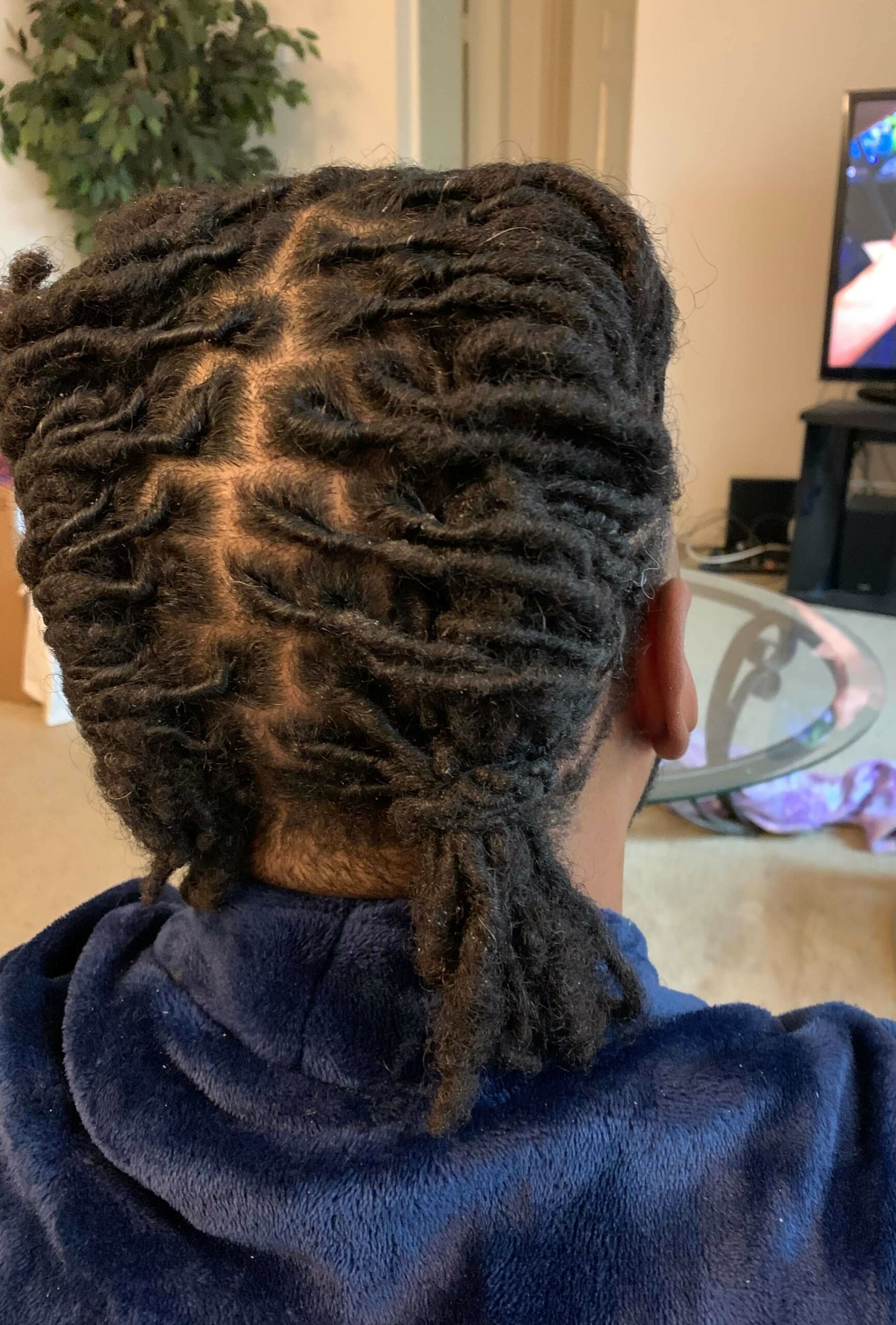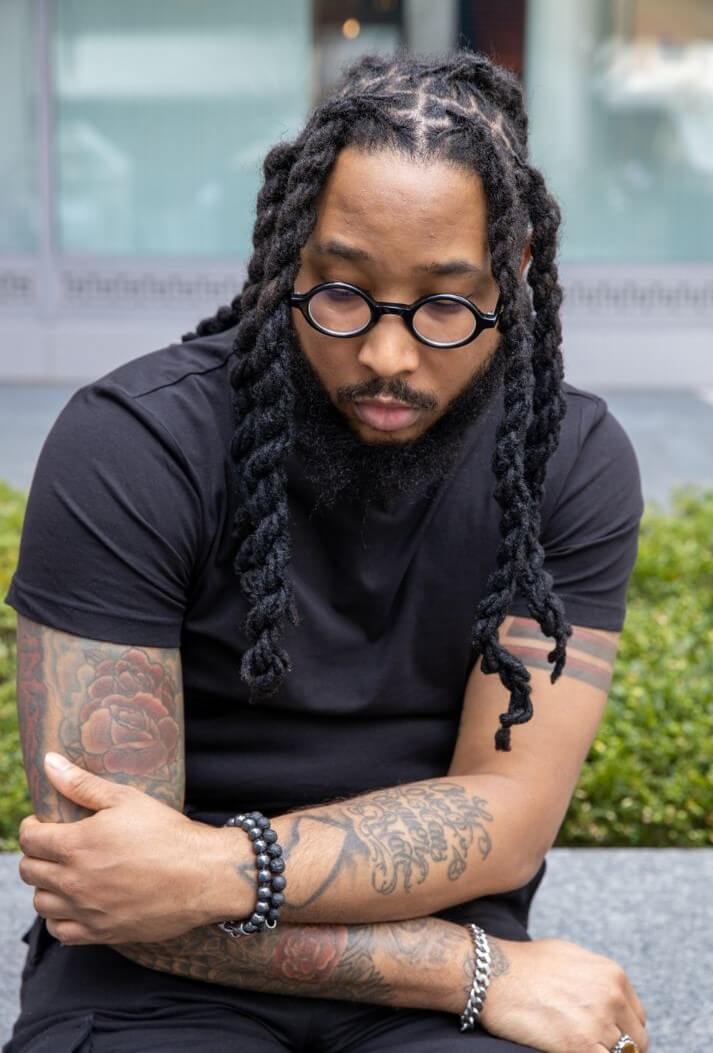Have you ever thought about getting locs? If so, you should be informed that the loc journey occurs in stages. Maybe you’ve been wearing your natural hair for a long time and feel the need to change your style. Natural hair is extremely versatile, but can also be a challenge to maintain.
This is where considering locs could be a lifesaver for your hair! Interested to know all about the 5 stages of the loc journey? Read on!
Before I explain the process, I’d like to preference that I myself do not wear locs, but I’ve learned how to do them. I am self-taught through a ton of practice, even more patience, and of course YouTube University 😂💪🏽.
Quick Question: Are you frustrated or tired of not knowing how to properly take care of your natural hair? Join our email list where we provide the best tips, tricks, and product suggestions for your kinks, coils and curls so that you can wear with confidence!
This post contains affiliate links, which means I may receive a small commission, at no cost to you, if you make a purchase through a link.
5 Stages to Know About the Loc Journey
1. Starter

Starter locs are the initial phase of the loc process. They are usually installed on very short hair – in the size of a mini or small Afro. These locs appear as short, springy coils once installed.
When I learned how to do them, I referred to this video:
The baby phase of the process could roughly start and end between 3-6 months. It depends on how fast or slow one’s hair grows, which determines how long the locs would be. On average, Afro or indigenous hair textures should be washed at least once a week or every two weeks. For locs to begin to form, you’d have to wait at least 3 weeks to wash after setting them.
You DO NOT have to wait months for the first wash session in order for the locs to take shape! For the shampoo, use one that caters to locs or a gentle, but cleansing type. I have used Locsanity shampoo as well as Melanin Hair Care’s African Black soap. They both mean business!
To set the locs, I use a tapered barber comb, rosewater, and a twisting cream. Please keep in mind that twisting cream is resourceful in the starter loc phase only. If you use it in the later stages, the hair could be prone to build up. Twisting cream worked wonders in this stage for me.
If you want to use something lighter, read on to the next phase!
2. Budding

The budding stage is known as the awkward stage. For me, it was the most challenging. This is also known as the sprouting stage when the locs are formed together effortlessly without unraveling. That springy coil appearance that I mentioned above would be long gone. The locs would now appear to be frizzy, thicker, and new growth is more noticeable.
This phase roughly begins and ends between 6-12 months. I use a pin tail comb to do clean parts for loc re-twists. I also use double-prong hair clips to secure the locs as I twist. I noticed that the locs are more difficult to twist during the sprouting stage.
They appear puffy so I twist the loose hairs down the length of the loc, palm roll, clip, and repeat. I shampoo the hair twice. On freshly washed hair, I use rosewater spray and oil only to re-twist to prevent product build-up.
3. Teen

After the awkward stage, here comes the ugly stage! I guess the budding and teen stages could seem to be one and the same, but not exactly. The buds start to form down the length of the entire loc and they are not as difficult to shape.
Also, the locs are really starting to look like locs! This is where the magic happens! You could also start to experiment with different hairstyles and accessories. During the teen phase, the locs still aren’t really long and they might even appear to be shrinking.
This may be the toughest stage, but it is also the most rewarding. The teen stage starts and ends roughly between 12-15 months. Locs should be washed every two to three weeks and moisturized 2-3 times during the week. Locsanity Daily Moisturizing Refresher Spray would be an amazing option to use.
This whole line is the G.O.A.T.🐐 in my opinion!
4. Maturity

At last, the locs have arrived and they are GIVING! This is the stage where they have lengthened, are easier to restyle, and appear less frizzy. They are also at least shoulder-length or longer. The maturity phase starts and ends roughly between 15-18 months.
This is the phase where I begin to incorporate hold products. There are a few options here and when used properly, they do not create build-up. Some excellent choices are African Formulas SuperGro Hair Gel and Taliah Waajid Black Earth Products Lock It Up.
5. Root

Last, but certainly not least, is the root stage. This stage occurs around month 18 and onward. The locs should be full and around the same length. They also may feel a bit heavy due to length and fullness. Locs should receive regular maintenance. A wash would be great every 1-2 weeks.
Conditioning afterwards would be fine too, but I have yet to do this. Instead, I re-twist and use moisturizing products. I re-twist locs in 2.5 to 3-week intervals. I avoid frequent re-twists because I do not want to weaken the locs with too much tension.
Keeping the scalp clean and moisturized as well as the locs would be most beneficial. Lastly, be sure to get ends trimmed when necessary, sleep on a silk or satin pillowcase, and wear a cover on the head at night.
So, there you have it!

Are you convinced to start your loc journey? I would love to help you along the way! Make sure to join our email list for more tips on wearing locs, maintaining healthy natural hair, style inspo, and more!
Become a part of the community! Subscribe here.
You Might Also Like:
- 10 Reasons to Go Natural – #5 Will Shock You
- Natural Hair Care Tips!
- How to Grow Your Hair Longer from the Inside Out!
